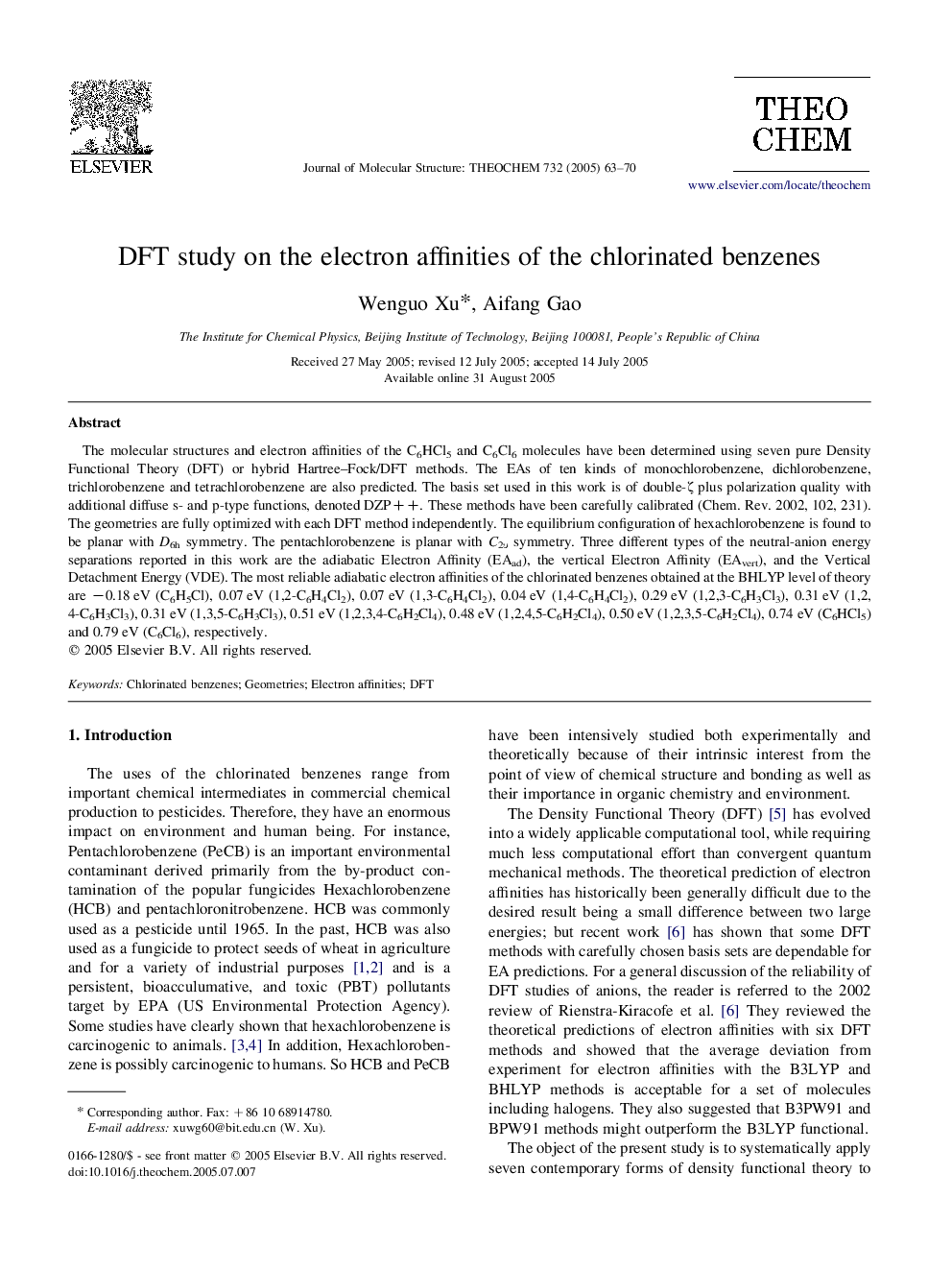| Article ID | Journal | Published Year | Pages | File Type |
|---|---|---|---|---|
| 9591491 | Journal of Molecular Structure: THEOCHEM | 2005 | 8 Pages |
Abstract
The molecular structures and electron affinities of the C6HCl5 and C6Cl6 molecules have been determined using seven pure Density Functional Theory (DFT) or hybrid Hartree-Fock/DFT methods. The EAs of ten kinds of monochlorobenzene, dichlorobenzene, trichlorobenzene and tetrachlorobenzene are also predicted. The basis set used in this work is of double-ζ plus polarization quality with additional diffuse s- and p-type functions, denoted DZP++. These methods have been carefully calibrated (Chem. Rev. 2002, 102, 231). The geometries are fully optimized with each DFT method independently. The equilibrium configuration of hexachlorobenzene is found to be planar with D6h symmetry. The pentachlorobenzene is planar with C2Ï
symmetry. Three different types of the neutral-anion energy separations reported in this work are the adiabatic Electron Affinity (EAad), the vertical Electron Affinity (EAvert), and the Vertical Detachment Energy (VDE). The most reliable adiabatic electron affinities of the chlorinated benzenes obtained at the BHLYP level of theory are â0.18Â eV (C6H5Cl), 0.07Â eV (1,2-C6H4Cl2), 0.07Â eV (1,3-C6H4Cl2), 0.04Â eV (1,4-C6H4Cl2), 0.29Â eV (1,2,3-C6H3Cl3), 0.31Â eV (1,2, 4-C6H3Cl3), 0.31Â eV (1,3,5-C6H3Cl3), 0.51Â eV (1,2,3,4-C6H2Cl4), 0.48Â eV (1,2,4,5-C6H2Cl4), 0.50Â eV (1,2,3,5-C6H2Cl4), 0.74Â eV (C6HCl5) and 0.79Â eV (C6Cl6), respectively.
Related Topics
Physical Sciences and Engineering
Chemistry
Physical and Theoretical Chemistry
Authors
Wenguo Xu, Aifang Gao,
